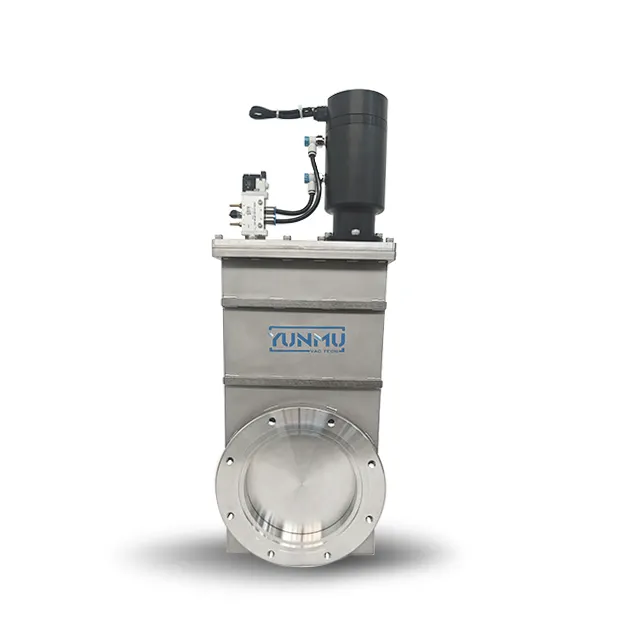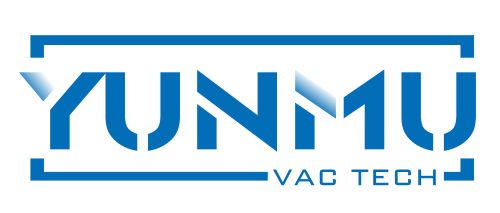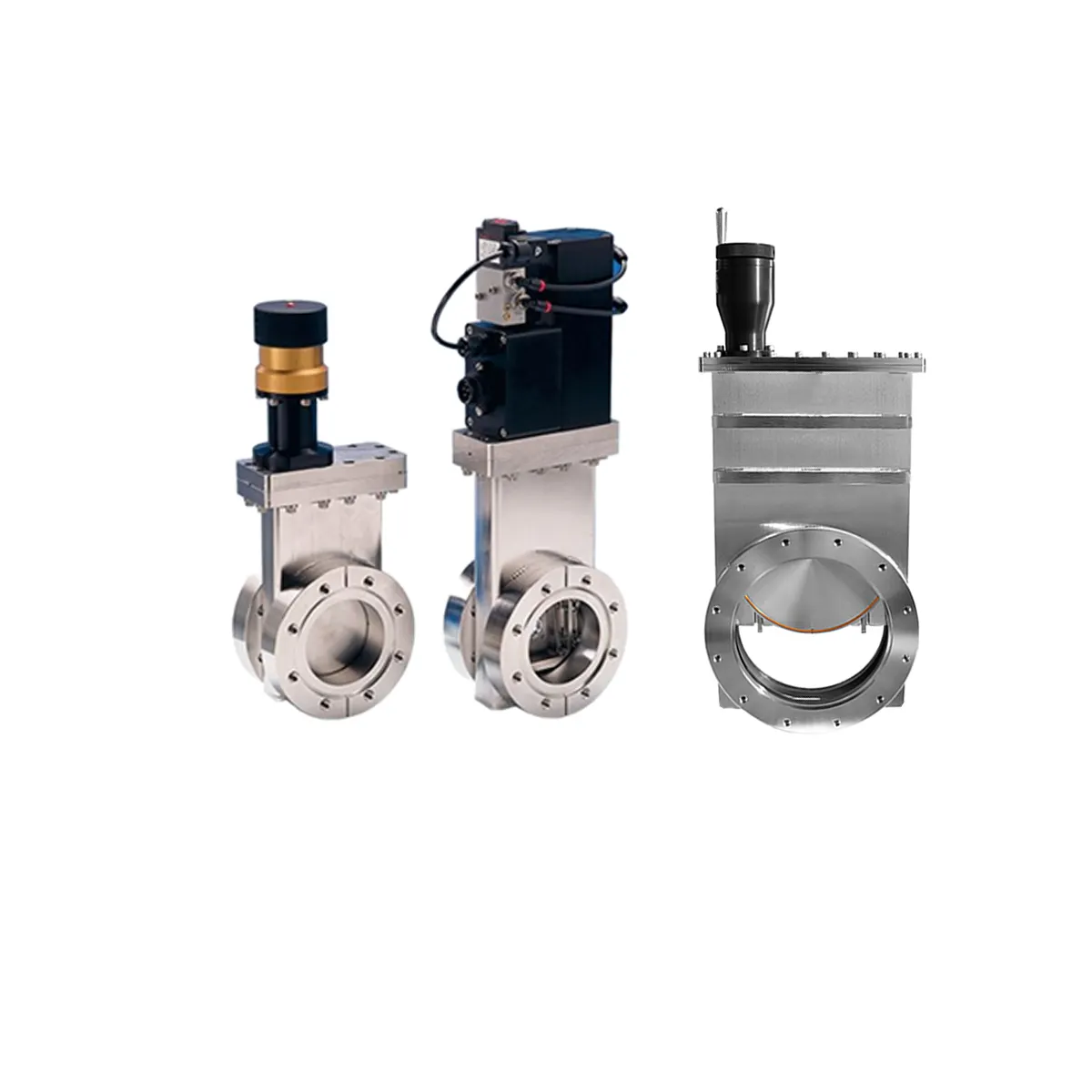Понимание ключевой роли вакуумных шиберных клапанов в современных промышленных приложениях
Вакуумный затвор клапаны представляют собой основу промышленной системы управления процессами и играют незаменимую роль в обеспечении целостности системы и эксплуатационной эффективности. Эти сложные компоненты разработаны для обеспечения исключительной герметичности в различных вакуумных средах — от производства полупроводников до химической переработки. Надежность механизма уплотнения вакуумного затвора напрямую влияет на качество производства, эффективность системы и общие эксплуатационные расходы.
Современные промышленные процессы требуют всё более точного контроля вакуума, что делает герметизирующую способность шиберных затворов более важной, чем когда-либо. Эти специализированные клапаны должны обеспечивать плотное уплотнение в сложных условиях, включая экстремальные температуры, агрессивные среды и переменные перепады давления. Понимание того, как вакуумный шиберный затвор достигает и поддерживает свою герметичность, имеет первостепенное значение для инженеров, специалистов по техническому обслуживанию и руководителей производственных объектов.
Основные компоненты и конструктивные особенности вакуумных шиберных затворов
Конструкция передового механизма уплотнения
Сердцем вакуумного затворного клапана является его сложный механизм уплотнения. Конструкция обычно включает эластомерные уплотнения, точно обработанные металлические поверхности и специальные крышечные сборки. Эти компоненты работают синхронно, создавая эффективный барьер против потери вакуума. Элементы уплотнения тщательно подбираются в зависимости от требований применения, материалы варьируются от фторэластомеров до специализированных полимеров, обеспечивающих долгосрочную надежность.
Современные вакуумные затворные клапаны зачастую оснащены двусторонними возможностями уплотнения, что позволяет им сохранять герметичность независимо от направления давления. Двунаправленная способность уплотнения достигается благодаря инновационной конструкции затвора и прецизионно спроектированным уплотнительным поверхностям, которые равномерно соприкасаются при закрытом положении клапана.
Конструкция затвора и механизмы движения
Сам элемент затвора представляет собой образец инженерной точности. Изготовленный с соблюдением точных допусков, затвор перемещается перпендикулярно направлению потока, обеспечивая герметичное закрытие. Современные вакуумные задвижки оснащены сложными системами привода, которые обеспечивают плавное и контролируемое движение без нарушения целостности уплотнения. Качество обработки поверхности и плоскостность затвора являются критически важными факторами, напрямую влияющими на эффективность уплотнения.
Выбор материала для элемента затвора требует тщательного учета таких факторов, как тепловое расширение, износостойкость и химическая совместимость. Для обеспечения стабильности размеров и устойчивости к коррозии обычно используются высококачественные нержавеющие стали и специализированные сплавы, что гарантирует стабильную герметизирующую способность на протяжении всего срока службы клапана.

Технологии повышения производительности
Инновации в области обработки поверхности и нанесения покрытий
Современные вакуумные затворные клапаны выигрывают от применения передовых технологий обработки поверхностей, которые улучшают их герметизирующие свойства. Специализированные покрытия могут повысить износостойкость, снизить трение и предотвратить прилипание материалов. К таким обработкам часто относят плазменное азотирование, алмазоподобные углеродные (DLC) покрытия или специальные технологии отделки поверхности, оптимизирующие взаимодействие между уплотнительными поверхностями.
Применение этих технологий улучшения поверхности распространяется не только на сам затвор, но и на уплотнительные поверхности, а также другие критически важные компоненты. Такой комплексный подход обеспечивает равномерность характеристик, увеличенный срок службы и стабильную герметичность в различных условиях эксплуатации.
Системы точного контроля
Интеграция сложных систем управления революционизировала работу вакуумных затворных клапанов. Современные клапаны оснащены датчиками положения, устройствами контроля давления и автоматическими системами привода, которые совместно обеспечивают оптимальную герметичность. Эти системы управления могут регулировать усилие уплотнения в зависимости от текущих условий эксплуатации, предотвращая как чрезмерное сжатие, так и недостаточное давление уплотнения.
Наличие передовых возможностей мониторинга позволяет операторам отслеживать работу клапанов и прогнозировать потребность в техническом обслуживании до того, как ухудшение состояния уплотнения повлияет на функционирование системы. Такой прогнозирующий подход помогает поддерживать стабильную герметичность, сводя к минимуму незапланированные простои и обеспечивая максимальную эксплуатационную эффективность.
Эксплуатационные и экологические аспекты
Решения для управления температурой
Эффективное регулирование температуры играет ключевую роль в обеспечении герметичности вакуумных задвижек. Системы терморегулирования могут включать охлаждающие каналы, конструкции с отводом тепла и тщательно подобранные материалы с соответствующими характеристиками теплового расширения. Эти особенности помогают сохранять целостность уплотнения даже при резких перепадах температуры или длительной работе при высоких температурах.
Инженеры должны учитывать как немедленные, так и долгосрочные последствия воздействия температуры на уплотнительные элементы. Современные вакуумные задвижки зачастую оснащаются тепловыми барьерами и специализированными системами охлаждения, которые защищают чувствительные уплотнительные компоненты и обеспечивают стабильную работу в широком диапазоне температур.
Стратегии предотвращения загрязнения
Поддержание чистоты уплотнительных поверхностей имеет важнейшее значение для надежной работы вакуумного затвора. Современные конструкции включают элементы, предотвращающие накопление частиц и минимизирующие риск повреждения уплотнений из-за загрязнений. К ним могут относиться специализированные продувочные патрубки, ловушки для частиц и самоочищающиеся механизмы, которые помогают сохранять целостность уплотнений в сложных условиях.
Применение стратегических протоколов технического обслуживания в сочетании с инновационными конструктивными решениями способствует тому, что уплотнительные поверхности остаются свободными от загрязнений и посторонних частиц, которые могут нарушить работоспособность. Такой проактивный подход к контролю загрязнений особенно важен в высокочистых применениях, где даже минимальная утечка является недопустимой.
Факторы обслуживания и долговечности
Протоколы профилактического обслуживания
Регулярное техническое обслуживание имеет решающее значение для поддержания оптимальной герметичности вакуумных задвижек. Комплексные программы обслуживания включают периодический осмотр уплотнительных поверхностей, проверку выравнивания привода и оценку состояния уплотнений. Эти мероприятия помогают выявить потенциальные проблемы до того, как они перерастут в серьезные неполадки, способные нарушить целостность системы.
Современные вакуумные задвижки спроектированы с учетом удобства обслуживания, что облегчает регулярный осмотр и сервисные процедуры. Простой доступ к основным компонентам, модульная конструкция и сменные уплотнительные элементы способствуют более эффективному техническому обслуживанию и повышают долгосрочную надежность.
Мониторинг и оптимизация производительности
Современные системы мониторинга предоставляют ценную информацию о работе вакуумного шиберного клапана с течением времени. Эта информация позволяет операторам оптимизировать графики технического обслуживания, выявлять тенденции износа уплотнений и принимать обоснованные решения о сроках замены компонентов. Внедрение интеллектуальных технологий мониторинга способствует поддержанию максимальной эффективности уплотнения при одновременном снижении затрат на обслуживание.
Регулярный анализ производительности обеспечивает постоянное совершенствование рабочих параметров и практик технического обслуживания. Отслеживая ключевые показатели эффективности, организации могут разрабатывать более эффективные стратегии обслуживания, продлевающие срок службы уплотнений и повышающие общую надёжность системы.
Часто задаваемые вопросы
Какие факторы наиболее существенно влияют на срок службы уплотнения вакуумного шиберного клапана?
Температура эксплуатации, частота циклов и условия окружающей среды являются основными факторами, влияющими на срок службы уплотнений. Правильный выбор материала, регулярное техническое обслуживание и соблюдение заданных рабочих параметров могут значительно продлить срок службы уплотнений и обеспечить их оптимальную производительность.
Как часто следует проверять уплотнения вакуумного шиберного клапана?
Частота проверок зависит от требований применения и условий эксплуатации. Как правило, визуальные осмотры следует проводить ежеквартально, а более тщательную оценку — ежегодно или в соответствии с рекомендациями производителя и фактическими режимами использования.
Какие признаки указывают на ухудшение работы уплотнения вакуумного шиберного клапана?
Распространённые признаки включают увеличение времени откачки, снижение уровня вакуума, необычные шумы во время работы и нестабильное движение привода. Регулярный контроль этих параметров помогает выявить потенциальные проблемы с уплотнениями до того, как они приведут к отказу системы.
Содержание
- Понимание ключевой роли вакуумных шиберных клапанов в современных промышленных приложениях
- Основные компоненты и конструктивные особенности вакуумных шиберных затворов
- Технологии повышения производительности
- Эксплуатационные и экологические аспекты
- Факторы обслуживания и долговечности
- Часто задаваемые вопросы

